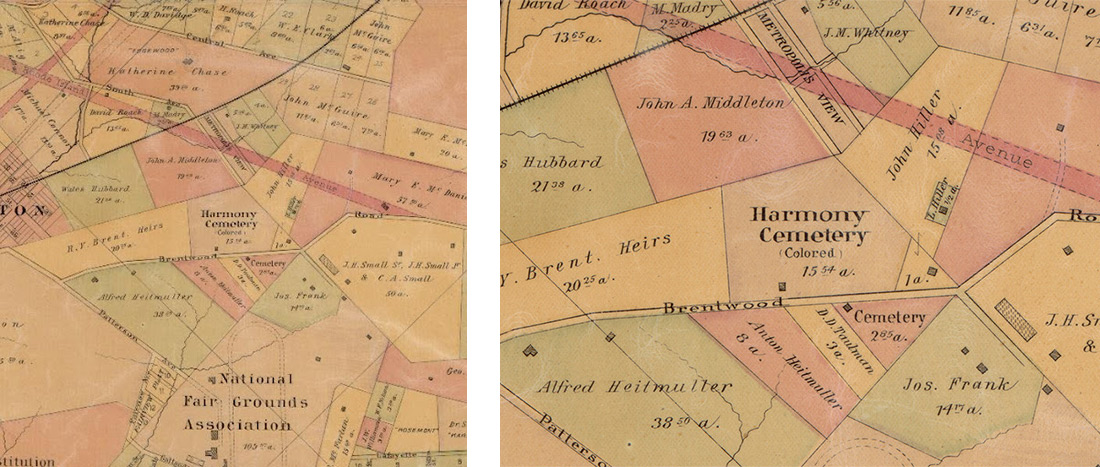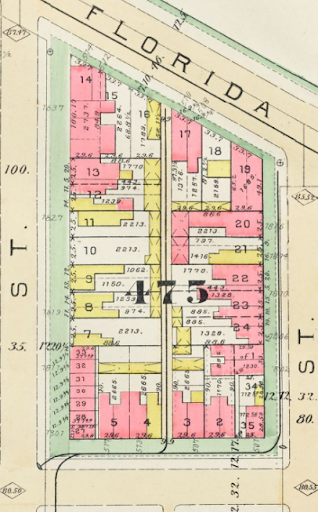In 1852, an ordinance prohibited the establishment of new cemeteries within the city limits, which prevented the expansion of the Harmoneon. Other laws imposed additional burdens on cemeteries, and an 1856 regulation required that cemeteries in the city be relocated.
The sale of the Harmoneon and purchase of the new cemetery site needed Congressional authorization, which was granted in 1856, subject to the approval of the Secretary of the Interior.

Location of Harmony Cemetery, later Columbian Harmony Cemetery, 1859-1960. Map of the District of Columbia from official records and actual surveys, G.M. Hopkins, C.E., 1887. Library of Congress Geography and Map Division, Washington, DC.
The society purchased a larger plot of land about two miles to the east for a new cemetery in 1857. It was a 17-acre site outside Washington City limits, but still within the District of Columbia. The property was bounded by Brentwood Road, NE and the Baltimore and Ohio Railroad from east to west, and Rhode Island Avenue, NE and T Street, NE from north to south.
By 1859, the society transferred the Harmoneon’s graves to this new burial ground called Harmony Cemetery, and later Columbian Harmony Cemetery. The original site was divided into lots that were sold to help fund the new cemetery, and by the end of the Civil War, the Harmoneon had disappeared from the map.
Most of the houses on the former site of the Harmoneon were built in the 1870s and 1880s. At least one homeowner reported the discovery of human remains when excavating a cellar in the 20th century. Presumably, remains are still present on the site.

Square 475 was substantially built out by 1892. Real estate plat-book of Washington, District of Columbia, volume 1, 1892 - Plate 32 (Detail). G.M. Hopkins & Co. People’s Archive, DC Public Library.
Continue Reading
Find out more about the Harmoneon Cemetery by clicking on the articles below:




